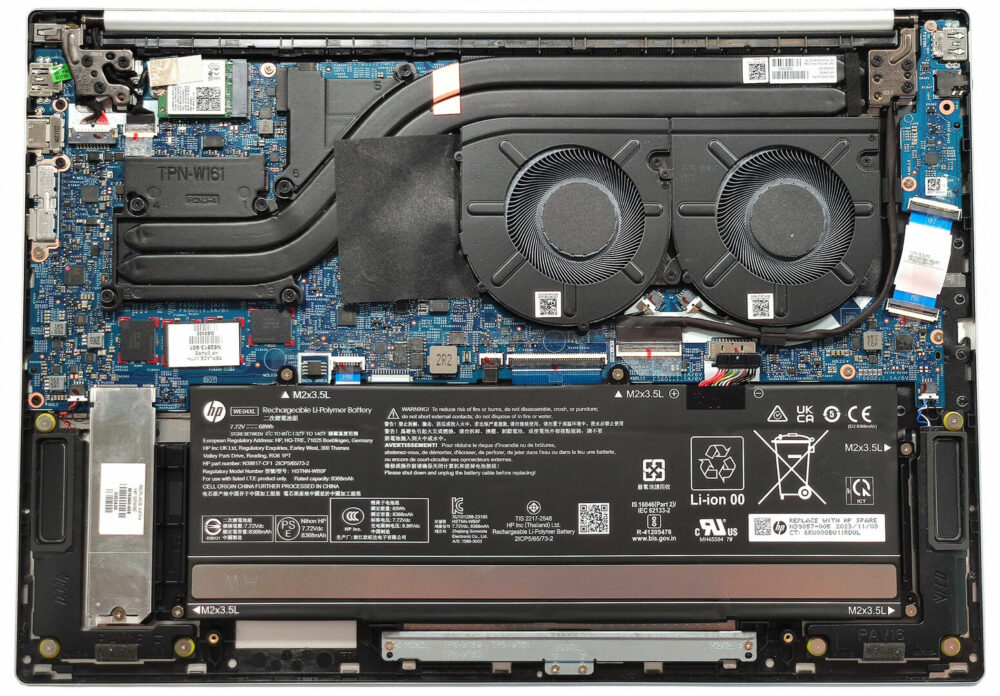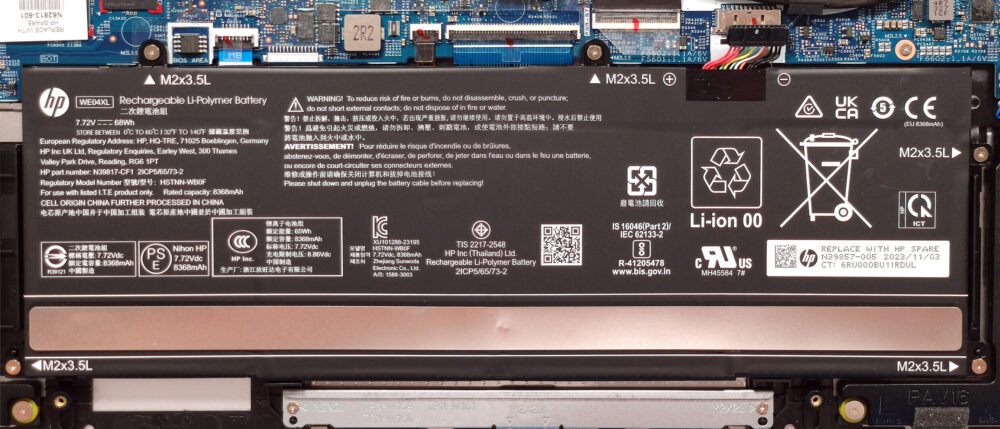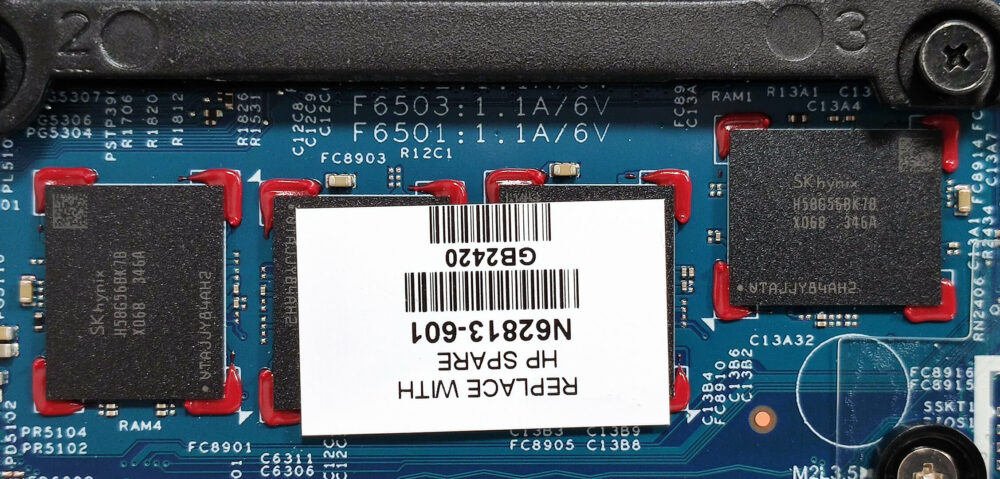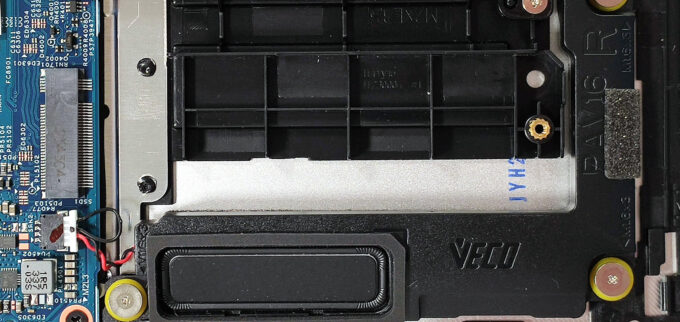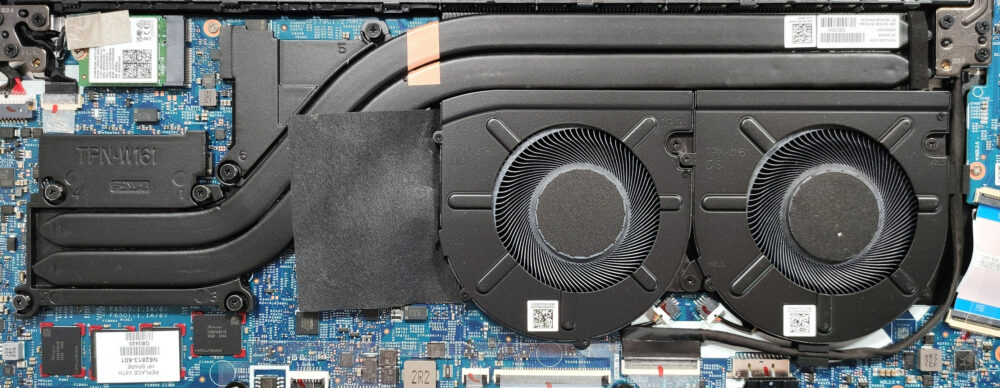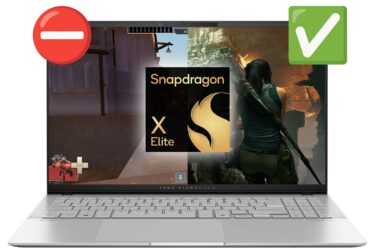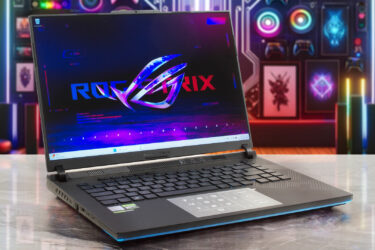How to open HP Pavilion Plus 16 (ab0000) – disassembly and upgrade options
Step 1: Opening the HP Pavilion Plus 16
- Turn off the laptop and place it on a clean, flat surface. Start by removing the 4 Phillips-head screws located at the bottom.
- Use a lever tool to slightly raise the panel near one of the top corners, then fully pry open the area behind the hinge cover.
- Lift the backside near the top edges with more force to pop the sections apart, then continue prying along the sides and front to remove the bottom panel completely.
Step 2: Battery Removal
- Locate the battery connector on the motherboard. Carefully detach it to prevent any short circuits.
- Remove the 5 Phillips-head screws that secure the battery to the laptop’s base and lift the battery out of the chassis.
More info: The 68Wh battery provides up to 10 hours of web browsing or 12 hours and 30 minutes of video playback.
Memory Upgrade
Unfortunately, the memory on this model is soldered and not upgradable. It comes with 16GB of LPDDR5x-5200 MHz RAM configured in dual-channel mode.
Storage Upgrade
- Identify the M.2 slot for a 2280 Gen 4 SSD. The slot is covered by a metal shroud secured with a single screw.
- Remove the screw and lift the shroud to access the SSD. Note the long thermal pad on the inside of the shroud for heat management.
Hint: Don’t forget to check out our Top M.2 SSDs Performance Rankings for insights on the best storage options available.
You can buy Gen 4 M.2 SSDs here: Buy from Amazon.com (#CommissionsEarned)
Step 3: Cooling System Overview
- Examine the cooling system which includes two large fans and a pair of long heat pipes that efficiently dissipate heat from critical components.
- Check the size and placement of the top-mounted heat sink and the two heat spreaders to ensure they are securely attached and functioning properly.
HP Pavilion Plus 16 (16t-ab0000, ab1000) in-depth review
What about a laptop that looks like an office machine but can be used as an entry-level gaming device or even for content creation? The HP Pavilion Plus 16 (ab0000) falls right into this category. In addition, this is a powerful but thin notebook with a 45W Intel Raptor Lake CPU under the bonnet. Moreover, you can configure the gadget with an optional GeForce RTX 3050 with a 6GB VRAM buffer.There aren't too many display options for the series, actually, you're stuck with just one screen model. That's fine because we are talking about a 120Hz 16:10 1600p IPS panel. This one supports a Varia[...]

Pros
- Clean design
- Low weight and a thin profile for a 16-incher (1.89 kg / 17.7 mm)
- Impressively big cooling system for such a profile height
- Adequate CPU and GPU frequencies in long loads
- Wide viewing angles and a high max brightness of 414 nits (AUOFDA4)
- Snappy pixel response times (8 ms) for an IPS panel (AUOFDA4)
- PWM-free (AUOFDA4)
- 95% sRGB coverage + good color representation with our "Design and Gaming" profile (AUOFDA4)
- Very good input devices
- Up-to-date port selection
- The fans aren't noisy in "Performance" mode
- The optional 6GB GeForce RTX 3050 is still fine for gaming on Medium or High details
- Long battery battery life given the 1600p display and the powerful hardware
- Has a 5MP IR Web camera with a privacy shutter
- Snappy NVMe
Cons
- Spongy lid
- So-so CPU clocks in short and medium loads
- Lacks a fingerprint reader
- Soldered memory and just one M.2 slot
- The SSD gets hot during benchmarking

